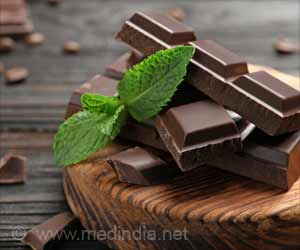Fine-tuning the cocoa beans during the processing can help develop new flavors of chocolate, reports a new study.

The research was conducted on so-called noble cocoa (the varieties Criollo and Trinitario). Since the vast majority of the world's cocoa production is of the Forastero varietal, much more research has been done on this variety than on the two aforementioned varietals.
"Criollo cocoa is less bitter than Forastero but is still more aromatic. You could call it the Pinot Noir of cocoa. But Criollo is a hassle to cultivate, and it is difficult to grow in Africa, which is why it is almost exclusively grown in Central America, South America, and Madagascar," says Professor with Special Responsibilities at the Department of Food Science at the University of Copenhagen (UCPH FOOD) Dennis Sandris Nielsen and continues:
"In this study, we have, together with colleagues from Belgium and Nicaragua, examined for the first time how different conditions during fermentation affect the composition and activity of the microorganisms naturally present on the Criollo beans and how this affects the flavor of the finished fermented beans.
It has long been known that the processing, including the fermentation and drying of the cocoa, is important in relation to the final quality of the cocoa.
"Our research confirms this, and we have also learned how to fine-tune the cocoa by fine-tuning the process itself, which means that you can get a higher quality out of your raw materials if you understand these processes," says Dennis Sandris Nielsen.
Advertisement
A cocoa fruit is the size of small honey melon and contains 30-40 cocoa beans, which are surrounded by pulp. If you take a raw cocoa bean and try to make chocolate from it, it does not taste good - you need fermentation to release the flavor potential.
The fermentation is done by opening the cocoa fruit, removing the beans and allowing them to ferment .
Advertisement
Initially, it is mainly yeast that grows and then lactic acid bacteria. The yeast forms alcohol, while the lactic acid bacteria eat some of the citric acids that are naturally present. This means that the pH rises, making the environment more favorable for acetic acid bacteria, which converts some of the alcohol that has been formed into vinegar.
The processes generate a lot of heat - reaching approx. 45-48 degrees. The alcohol and vinegar penetrate the beans and kill the germ in the cocoa beans so that they can no longer germinate. The cell walls are broken down, which means that different substances can react with each other, and this is where the flavor development evolves.
Flavour development continues as the beans dry in the sun, where they are dried until they are microbially stable. Here ends the process for the cocoa farmers who can now sell the fermented and dried beans on. The producers are responsible for roasting the beans, where the substances formed during fermentation and drying react with each other, leading to the well-known and beloved flavor and aroma of cocoa.
Processing is as important as genetics
In the study, fermentations from different parts of Nicaragua (including highlands and lowlands) as well as fermentations with a variety of oxygen availability were studied.
"By using a combination of High Throughput Sequencing, chromatography, and sensory analysis, we can get an understanding of the quality of the cocoa, particularly in relation to the processing.
Overall, our findings show that the treatment the cocoa receives after the harvest is at least as important for the quality and flavor as the genetics of the cocoa. Where the cocoa was grown also has some significance. By varying the conditions during fermentation, we can therefore also reasonably predict the final taste, which provides good opportunities for high-end producers, in particular, to develop chocolate with different flavors and scents," says Dennis Sandris Nielsen.
Source-Eurekalert














